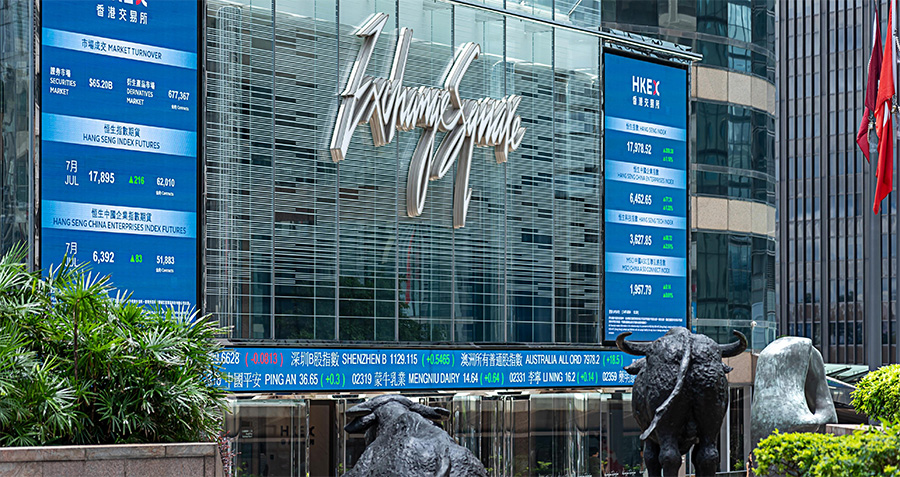Tesla’s story in China captures the paradox facing international businesses today. Once celebrated as the country’s electric vehicle darling with more than 16% market share, Tesla now finds itself squeezed by nimble local competitors like BYD and NIO—yet it still relies on its Shanghai Gigafactory for much of its global profitability. China has become at once the most vital and the most formidable market for global firms: too important to abandon, yet increasingly difficult to win in.
This tension defines the current landscape for international businesses in China. While traditional sectors are seeing retrenchment, investment in advanced manufacturing, renewable energy and professional services is quietly expanding. A strategic repositioning is taking place in China, as firms recalibrate their roles within the country’s evolving industrial and consumer ecosystems. The question is no longer whether or not to be in China, but how to thrive here.
“The competitive landscape in China has transformed dramatically over the past decade. Chinese companies have become faster, more innovative, and far more sophisticated— particularly in areas such as digitalization and AI,” says Eric Zheng, President of the American Chamber of Commerce – Shanghai (AmCham Shanghai). “Where international firms once competed mainly on quality and brand, they now face agile local players who deeply understand the market and move with remarkable speed. Success in China today requires not only global expertise, but also local adaptability and a sharper focus on innovation and execution.”
International firms in China
Over the past 15 years, the nature of foreign investment and business involvement in China has evolved dramatically—from low-cost manufacturing toward services and high-tech industries. In the 2000s, firms such as BASF, Volkswagen and Samsung used China as a global production base, underscoring its role as the world’s factory. But since the 2010s, multinational companies have increasingly focused on China’s growing consumer market and technology ecosystem, deepening their presence in areas like R&D, retail and digital services.
Foreign direct investment (FDI) tells a mixed story of international engagement in China, and recent trends point to a significant cooling after years of steady expansion. Official data show that utilized FDI peaked at around $189 billion in 2022 before falling to $163 billion in 2023 and $116 billion in 2024, reversing the momentum of the previous decade. The drop reflects weaker global sentiment, geopolitical tensions and slowing domestic demand, while World Bank figures—showing just $18 billion in net inflows for 2024—highlight the divergence between China’s “utilized FDI” and international accounting standards.
But despite cooling investment, FDI today is concentrated in high-tech manufacturing—such as electronics, renewable energy and medical devices—and in modern services including IT, logistics, finance and professional consulting. A shift that aligns with Beijing’s emphasis on high-quality growth and industrial upgrading. Companies like BMW, Siemens and ABB are investing in smart manufacturing; Amazon Web Services and SAP are expanding digital and cloud centers; and healthcare leaders like Johnson & Johnson and GE Healthcare continue to grow their R&D hubs. Together, these trends mark China’s move up the value chain toward innovation-driven, service-oriented investment.
“Taking our German companies as an example, the time of China being a mere extended workbench for these firms is long over,” says Oliver Oehms, Executive Director of the German Chamber of Commerce in China – North China. “They are not manufacturing low-quality products here, but very competitive products that meet global standards. Therefore, the role of China has changed big time.”
Changes and challenges in China
Over the past five years, a number of different factors have made China a more difficult place to operate and succeed for international firms, both macroeconomic and structural.
“The first challenge has been the economic slowdown, at least in some important sectors where we have seen strong growth in the past,” says Oehms. “The second one is the emergence of very strong and competitive Chinese firms serving their own market, which is fully understood, but obviously this is giving a harder time to international companies than they were used to in the past. And last but not least, a more structural challenge: some regulatory shortcomings.”
Chinese companies that were once seen only as imitators have become powerful competitors across nearly every major industry. In sectors from consumer electronics to electric vehicles, domestic leaders such as Huawei, Xiaomi and BYD now dominate both the Chinese and global markets, while e-commerce giants Alibaba, JD.com and Pinduoduo continue to dominate at home.
Supported by scale, speed and favorable policy conditions, these so-called national champions have transformed China’s business landscape, leaving foreign firms to contend with rivals that enjoy cost advantages, rapid innovation cycles and deep market insight.
For international players, the bar for competitiveness has been raised by competitive pricing by local brands, but at the same time they are increasingly capturing younger consumers through sharper cultural relevance and digital agility. At the same time Chinese biotech firms and luxury labels like Shang Xia—a luxury fashion brand backed by Hermès—and Icicle—a high-end eco-friendly clothing brand—are expanding their global footprint.
“There are always many challenges, but from my experience the biggest challenge today is rising local competition,” says Bowen Han, Senior Consultant at strategy consultancy Sinolytics. “This can be surprising to small- and medium-sized enterprises who often fail to realize how much Chinese companies have leveled up recently. European companies, in sectors traditionally dominated by them, often assume that they have a technological advantage. In many areas, Chinese players from SOEs to private companies have nearly closed the tech gap.”
The regulatory environment in China has also been evolving rapidly, reflecting both domestic policy priorities and global geopolitical pressures. Beijing has continued to refine its negative list for foreign investment, expanding access in sectors such as professional services, while tightening scrutiny in strategic areas like AI, semiconductors and dual-use technologies.
Among the new regulations are requirements for foreign players in certain high-tech industries to submit more detailed operational plans, disclose partnerships and IP use and comply with stricter cybersecurity and data localization rules.
“Changes in policies, technological shifts and demand patterns reinforce one another,” says Edward Tse, CKGSB Professor of Managerial Practice of Strategy and founder and CEO of Gaofeng Advisory. “Once this interaction reaches a certain threshold—triggered by a major policy change or a technological inflection point or a combination—the market and competition undergo a fundamental and often abrupt shift. These inflection points frequently catch non-Chinese companies unawares, forcing them to reevaluate their strategies or risk being displaced.”
Trade tensions and tariff pressures create another layer of complexity. Since 2023, US measures such as the expanded Foreign Direct Product Rule and “AI diffusion” restrictions have limited Chinese access to advanced chips, AI hardware and cloud computing technologies, meaning that companies like Nvidia have had to produce lower-performance chips for the Chinese market, reducing potential revenues by an estimated $2.5 billion and prompting adjustments to supply chains and product forecasts.
“The greatest challenge today lies in navigating geopolitical uncertainty amid escalating trade tensions,” says Zheng. “To succeed, companies must be prepared to withstand geopolitical volatility and remain committed to a long-term China strategy. Effective localization—combined with sustainable contingency planning—will be essential to ensuring resilience and success in this evolving environment.”
Staying competitive in China
Despite the growing number of challenges that international firms face in China, China’s push to strengthen domestic innovation and industrial upgrading provides opportunities for foreign companies that understand the multifaceted approach that China’s market now requires.
Companies must localize their products and branding to resonate with Chinese consumers’ preferences and cultural nuances. Success increasingly depends on investing in innovation and R&D within China, allowing firms to tailor offerings to local needs while benefiting from the country’s talent pool and advanced research infrastructure.
“Successful firms do not lean on their existing technology developed outside of China,” says Han. “If you do that, you will be thoroughly surprised by the ‘China speed’ of local competitors. Successful companies constantly adapt and evolve, often with localized R&D.”
Equally important is building partnerships and integrating into local ecosystems, from suppliers to technology platforms, to leverage existing networks and enhance market reach. At the same time, firms must demonstrate regulatory flexibility, staying agile in response to shifting rules and compliance requirements.
“In the last few years, we have been observing a third wave of localization—what we call Localization 3.0,” says Oehms. “German companies now reflect a fully integrated value chain in the Chinese market, not only buying supplies locally but also conducting research and development—something that typically was done back home. Many are now developing, manufacturing and selling their products locally: purely Chinese-engineered, Chinese-driven and Chinese-powered operations, and while effectively made in China, they still have German DNA and legacy attached to them.”
Finally, digital adoption—from e-commerce channels to AI-driven marketing and operations—remains a critical lever for reaching consumers, optimizing performance and maintaining a competitive edge in one of the world’s most dynamic markets.
“Embracing digital and AI-driven innovation is very important to stay competitive,” says Zheng. “Chinese competitors are setting the pace in technology adoption, so keeping up requires real investment in data, automation and consumer insight.”
A framework for competitiveness in China
For international executives assessing their future in China, the question is no longer just whether competition is intensifying—it’s whether their own business model can keep pace. Companies can evaluate their China competitiveness across four dimensions: speed of innovation, differentiated technology, brand and market positioning and organizational adaptability.
For example, if a firm’s product cycle exceeds six months while Chinese rivals launch updates every quarter, its innovation speed is likely uncompetitive. If market share has declined by more than 30% in two years and the brand no longer ranks among the top three in its category, it may be time to fundamentally reconsider the local approach. Meanwhile, firms that still command unique technology advantages—typically two to three years ahead of domestic peers—or occupy premium consumer segments can still thrive by emphasizing expertise, trust and long-term value.
This type of structured assessment turns strategic reflection into a practical tool: a way to distinguish between temporary challenges and structural disadvantages, and to decide whether to double down, restructure or pivot within the China market.
Future opportunities
China remains the world’s second-largest economy and its largest consumer market in many categories, and as a result there are still opportunities for international firms across a number of existing and several newly growing industries.
China’s rapidly aging population is driving strong, long-term demand for healthcare products, services and eldercare solutions, making the sector one of the most promising for foreign firms. With over 22% of citizens already aged 60 or older—a share expected to reach nearly 35% by 2050—rising incomes, broader insurance coverage and initiatives like Healthy China 2030 are fueling healthcare spending and innovation. At the same time, a vibrant silver economy is emerging, as tech-savvy, health-conscious seniors increasingly seek premium lifestyle, wellness and digital services.
“Personally, I believe hospice care is a very promising area,” says Han. “China has a rapidly aging population which will become the largest global market by far. Policy is moving in a favorable direction with hospice care starting to be incorporated into public health insurance. Currently the market is still not crowded, with only one major domestic supplier offering low-cost service.”
China’s evolving regulatory landscape and growing focus on a green transition also create fertile ground for specialized professional services. Niche advisory firms—particularly those focused on ESG consulting, regulatory compliance and global expansion strategy—can offer critical expertise to both domestic companies and foreign investors navigating the market. As businesses look to align with regulatory requirements, pursue cross-border growth or implement ESG strategies, demand for high-quality, specialized advisory services is increasing.
“Consulting firms are seeing tailwinds as global trade tensions drive demand for advisory, compliance and due diligence services from companies trying to navigate China’s complex environment,” says Zheng.
In addition, there are also opportunities to learn in the China market and export that expertise elsewhere. Many companies outside China are eager to replicate the efficiency, scalability and customer-centric innovations pioneered in the Chinese market and utilize them elsewhere. Firms that can translate these insights into actionable strategies for global clients stand to benefit from China’s dual role as a source of inspiration and a partner in digital transformation.
“We see German companies looking into using China as a hub for the region—Asia, Southeast Asia, the Middle East, Africa—where there are untapped opportunities,” says Oehms. “Don’t misjudge China purely as a place for selling products, but as a place to learn from AI, e-commerce and digital platforms. Why not come here to see how we can benefit from these capacities and experiences?”
From China to the world
There is no doubt that, over the last decade, the China market has become a more challenging place for international firms to find success, thanks to growing competition from local companies, global trade and geopolitical frictions and domestic regulatory changes. But while success in China cannot be taken for granted, there are still opportunities for companies that look to innovate locally, integrate into ecosystems and anticipate shifts in regulation and consumer behavior.
“I believe it is still a good decision to enter the Chinese market, for a very simple reason: if you don’t come to China, China will come to you,” says Han. “Chinese companies will come to your home market eventually, so why not come, compete and be prepared.”
Rather than being passive participants, there is a need to co-create with China. In this sense, international competitiveness in China is not about beating domestic rivals at their own game, but about finding complementary niches and leveraging global strengths while embedding deeply in local realities.
“As companies, regardless of where they are headquartered, look for new sources of competitive advantages in the new and evolving world, we would also expect to see a rise in cross-border corporate relationships—spanning partnerships, joint ventures, alliances and acquisitions—aimed at creating more competitive advantages,” says Tse. “The interplay between market development and competition in China is reshaping businesses across the world.”




















